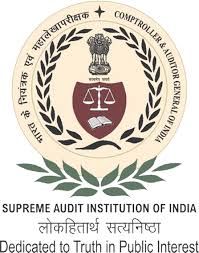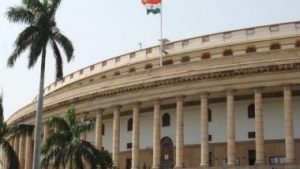Today’s Current Affairs: 3rd April 2025 for UPSC IAS exams, State PSC exams, SSC CGL, State SSC, RRB, Railways, Banking Exam & IBPS, etc
Table of Contents
Sangama Dynasty : Copper Plates Unveiled In Bengaluru

A set of rare copper plates dating back to the early 15th century, from the reign of Devaraya I of the Sangama Dynasty, has been unveiled in Bengaluru by Falcon Coins Gallery in collaboration with the Archaeological Survey of India (ASI).
- These copper plates are written in Sanskrit and Kannada, using Nāgarī characters and are particularly significant as they were issued during the coronation of King Devaraya I.
- A unique feature of the seal is that it depicts Vamana instead of the customary Varaha, which was the traditional royal insignia of the Vijayanagara Empire.
- The plates are dated Saka 1328 (1406 CE), confirming the coronation date of Devaraya I.
- The plates provide a detailed genealogy of the Sangama Dynasty, tracing the lineage from Chandra, Yadu, and Sangama to Harihara, Kampa, Bukka, Mãrapa, and Muddapa.
- Sangama Dynasty was the founding dynasty of the Vijayanagara Empire, ruling from 1336 to 1485 AD.
- Established by Harihara I and Bukka Raya I, this dynasty laid the foundation for one of the most powerful empires in South India.
- The rulers of this dynasty significantly strengthened administration, military power, and territorial expansion, making Vijayanagara a dominant political and cultural center.
Chile:

India and Chile have initiated discussions on a comprehensive trade agreement that aims to enhance economic cooperation.
- Located in South America, Chile is a long, narrow country with an average width of 110 miles (~178 km).
- Borders: North – Peru,Northeast – Bolivia,East – Argentina,West – Pacific Ocean,
- Chile also has sovereignty over Easter Island, the Juan Fernández Archipelago, and other Pacific islands.
- The country is mountainous terrain dominated by the Andes Mountains (the most extended mountain range in the world).
- Atacama desert in the north – the driest non-polar desert in the world.
- Highest peak: Ojos del Salado (6,893 m), an active stratovolcano in the Atacama region.
- Prone to earthquakes, tsunamis, and volcanic eruptions due to its location on the Pacific Ring of Fire.
- Chile is the largest producer of copper globally. Copper is a key component in electronic devices, renewable energy systems, and electric vehicles.
- Part of the “Lithium Triangle” along with Argentina and Bolivia, a crucial region for battery production.
- The Loa River, originating from the Andes, is Chile’s longest river.
Comptroller and Auditor General:

The Comptroller and Auditor General (CAG) report on ‘Prevention and Mitigation of Vehicular Air Pollution in Delhi’ highlights serious concerns regarding Air Quality Monitoring, Vehicular Pollution, and Government Accountability.
- The CAG of India is the head of the Indian Audit and Accounts Department (IA-AD) and is responsible for auditing government expenditures to ensure financial accountability.
- As per Article 148 of the Constitution of India, the CAG safeguards the public purse and monitors financial transactions at the Central and State levels.
- The CAG is one of the key pillars of Indian democracy, alongside the Supreme Court, Election Commission, and Union Public Service Commission (UPSC).
- The CAG’s powers and responsibilities are defined by the Comptroller and Auditor-General’s (Duties, Powers and Conditions of Service) Act, 1971, with amendments in 1976, 1984, and 1987.
INSV Tarini:

The Indian Naval Sailing Vessel (INSV) Tarini has reached Cape Town, South Africa, marking the fourth and final international stop in its global circumnavigation expedition, Navika Sagar Parikrama II.
- INSV Tarini is an indigenously built, 56-foot sailing vessel commissioned into the Indian Navy in February 2017.
- Built by Aquarius Shipyard Ltd., Goa, under the Make in India initiative.
- It is equipped with a Raymarine navigation suite, satellite communication systems, and emergency steering mechanisms, allowing it to operate under extreme conditions.
- The vessel is named after the Tara-Tarini hill shrine in Odisha, which was historically revered by sailors for safe voyages. In Sanskrit, ‘Tarini’ means both boat and saviour.
- Navika Sagar Parikrama II expedition was flagged off from Goa on October 2, 2024, by Chief of the Naval Staff, Admiral Dinesh K. Tripathi.
- The mission aims to cover 23,400 nautical miles (approximately 43,300 km) in eight months, sailing across three oceans and three major capes.
- Route Covered: Fremantle, Australia, Lyttelton, New Zealand,Port Stanley, Falkland Islands (UK),Cape Town, South Africa (final stop before returning to India)
- The mission is scheduled to conclude in May 2025, when INSV Tarini returns to Goa.
9K33 Osa-AK Missile System:

The Indian Army’s Air Defence warriors from the White Tiger Division have proven their operational readiness and technical expertise during a recent live missile-firing exercise which involved the firing of the 9K33 Osa-AK missile system.
- It is a Russian-built highly mobile, low-altitude, short-range tactical surface-to-air defence missile system.
- Originally developed in the 1960s and fielded by the Soviet Union in 1972, the Osa-AK has remained a crucial asset for many armies around the world, including the Indian Army.
- In the West, the Osa is known by the NATO reporting name “SA-8 Gecko”.
- It has a length of about 9.1 m, a width of 2.78 m, and a weight of up to 18 tonnes.
- The Osa-AK’s all-in-one vehicle setup, combining the transporter-erector-launcher and radar (TELAR), enables it to detect, track, and engage aerial threats independently.
- The vehicle can carry up to five crew members and is fitted with a nuclear, biological, and chemical (NBC) protection system.
- It is armed with 6 missiles ready to fire, mounted on the roof of the vehicle.
- It can engage targets up to a maximum range of 12km.
- It is highly mobile and can quickly respond to threats in a rapidly changing combat environment.
- It is fully amphibious, air transportable, and able to operate in a range of terrain conditions.
- With a range of around 500 km on the road, it can swiftly relocate to different regions for strategic deployment.
Vibe Coding:

Vibe coding recently became an overnight buzzword in Silicon Valley after being coined by OpenAI co-founder Andrej Karpathy.
- Vibe coding basically refers to using generative AI not just to assist with coding but to generate the entire code for an app.
- At its core, vibe coding is about communicating with AI in natural language to build apps.
- Users ask, or prompt, Large Language Model (LLM)-based models such as ChatGPT, to produce the code for an app or service, and the AI system does all the work.
- The term was coined by Andrej Karpathy, a skilled software engineer who was head of AI at Tesla and a founding engineer at OpenAI – the maker of ChatGPT.
- Vibe coding can help people with ideas for tools, apps, and services to make them a reality without the challenge of learning the specifics of a programming language.
- However, it can also be seen as a major security risk as it replaces experienced human coders with amateurs or untrained coders who give orders to AI chatbots instead of coding from scratch or understanding existing codebases.
- Human project managers and coders precisely frame how the code needs to take shape in order to best serve a specific use case.
- But an AI code generator may not understand the larger context of what it is creating.
- In other words, a Gen AI tool may indeed produce the code that the user requested, but this generated code might be too slow to run, too expensive to maintain, and too long to scan regularly for security risks.
Protection of Interests in Aircraft Objects Bill, 2025:

The Rajya Sabha recently passed the Protection of Interests in Aircraft Objects Bill, 2025, which seeks to implement international conventions on the leasing of aviation equipment.
- The bill aims to implement international agreements, particularly the Convention on International Interests in Mobile Equipment (commonly known as the Cape Town Convention of 2001) and its Protocol on Aircraft Equipment.
- India became a signatory to these agreements in 2008.
- These international standards are designed to secure the rights over high-value mobile assets such as aircraft, helicopters, and engines, thereby ensuring greater legal clarity and uniformity across the aviation industry.
- The bill is designed to bring these international agreements into India’s legal framework, ensuring that creditors and stakeholders in the aviation leasing space are protected under clear guidelines.
- The bill empowers the central government to make rules to implement the provisions of the Convention and the Protocol.
- The legislation designates the Directorate General of Civil Aviation (DGCA) as the registry authority for the purposes of the convention.
- The registry authority is responsible for the registration and de-registration of aircraft.
- Key provisions of the bill include the requirement for creditors to notify the DGCA before initiating any remedies in the event of a default.
- In cases where defaults occur, creditors will be entitled to recover assets such as aircraft, helicopters, and engines within two months, or a mutually agreed upon timeframe.
- The bill is expected to provide much-needed clarity and security, particularly in the leasing industry.
Farm Mechanization:

India’s farm mechanisation journey, once dominated by tractors, is now witnessing a transformative shift. The focus is moving toward smart machinery, automation, and precision tools to meet modern agricultural demands.
- Farm Mechanization involves using machines like harvesters and modern implements to improve productivity, enhance efficiency, and reduce dependence on manual labour in farming operations.
- Precisions Agriculture utilizes GPS, IoT, AI, drones, and data analytics to optimize resource use (water, fertilizers, pesticides) based on soil and climate conditions.
- Drones are used for crop monitoring, pesticide spraying, and yield estimation. India accounts for 22% of global drone imports.
- The Drone Didi Scheme aims to provide 15,000 drones to women SHGs for rental services, boosting mechanization and rural employment.
- Driverless tractors and robotic harvesters perform tasks like seeding, spraying, and harvesting with minimal human input.
- Robots in agriculture have enabled automation in sowing, irrigation, weeding, and harvesting, reducing costs and increasing efficiency.
- In India the overall farm mechanization level in India is around 47%. Punjab and Haryana have 40-45% mechanization, while Northeastern states have negligible adoption.
- Cereal crops like wheat and rice have approx 50-60% mechanization, while horticulture remains less mechanized.
- Globally, developed nations have over 90% mechanization, while underdeveloped regions, particularly Africa and South Asia, still depend on manual labor. China (60%) and Brazil (75%) lead among developing nations.
Rana Sanga : Lok Sabha Discussion

The Lok Sabha witnessed discussions about 16th century Rajput King Rana Sanga.
- Maharana Sangram Singh (1484–1527), popularly known as Rana Sanga, was the Rajput ruler of Mewar and a successor of the Sisodia clan.
- Ruling from 1508 to 1528, he expanded his kingdom across Rajasthan, Madhya Pradesh, Gujarat, and parts of Uttar Pradesh and Haryana.
- Rana Sanga defeated Ibrahim Lodi in the Battle of Khatoli (1517) and Battle of Dholpur (1518), and Sultan Mahmud Khilji II in the Battle of Gagron (1519), establishing Rajput dominance in North India.
- However, his ambitions suffered a major blow at the Battle of Khanwa (1527) against Babur, where Mughal artillery and internal betrayals led to his defeat. His legacy endures as a symbol of Rajput bravery.
Coral Bleaching in Australian Coral Reefs:
Australia’s Ningaloo Reef and Great Barrier Reef are experiencing its worst mass-coral bleaching due to prolonged marine heat waves due to climate change.Coral Bleaching is the loss of coral color (turning white) due to environmental stress, mainly rising sea temperatures, causing corals to expel symbiotic algae (zooxanthellae) that provide nutrients and color. Bleaching-level heat stress affected 83.6% of global reefs since 2023, with coral bleaching reported in 81 countries.
Postage Stamp on Mata Karma Bai:
The Department of Posts released a commemorative postage stamp on Mata Karma’s 1009th birth anniversary. Mata Karma Bai was a 11th century saint and Krishna devotee, born in 1017 AD in Jhansi, Uttar Pradesh. She is revered for her unwavering devotion and is best known for offering khichdi to Lord Krishna, a tradition still followed at Jagannath Temple, Puri. The temple is dedicated to Lord Jagannath (Vishnu) and was built in the 12th-century by Anantavarman Chodaganga Deva of the Eastern Ganga dynasty and completed in 1230 AD under Anangbheema Deva III.
Keeranatham Village Panchayat Model to Counter Plastic Waste:
Keeranatham Village Panchayat in Coimbatore has launched a unique plastic eradication campaign offering ₹10 per kg for collected plastic waste.Keeranatham Village Panchayat Model to Counter Plastic Waste grassroots-level campaign that rewards citizens for collecting and depositing plastic waste at the panchayat office. Residents are encouraged to bring plastic waste to the office between 10 a.m. and 5 p.m. and receive ₹10 per kg in return.
Saturn and the Discovery of Its New Moons:
Astronomers have discovered 128 new moons orbiting Saturn, taking the planet’s total confirmed moon count to 274 — the highest for any planet in the solar system. A team of astronomers identified 128 new moons around Saturn using the Canada-France-Hawaii Telescope with the “shift and stack” technique. These moons are officially recognized by the International Astronomical Union (IAU).With this latest discovery, Saturn now has 274 confirmed moons, surpassing Jupiter’s 95 moons as of 2024. These include both regular and irregular moons, with most new ones classified as irregular, small, and potato-shaped.
EY Report Projects 6.5% Growth in FY26 For India:
The latest EY Economy Watch report projects India’s GDP growth at 6.5% for FY26 (April 2025 – March 2026), emphasizing the importance of a well-calibrated fiscal strategy that balances economic expansion and fiscal prudence. The report highlights the need for increased government investment in human capital development, particularly in education and healthcare, to sustain long-term growth. It also underscores the necessity of raising the revenue-to-GDP ratio and implementing equalization transfers to bridge regional disparities.
Vandana Katariya Retires from International Hockey at the Peak of Her Career:
Indian women’s hockey stalwart Vandana Katariya announced her retirement from international hockey on April 2, 2025. The veteran striker, who holds the record for the most international caps in Indian women’s hockey history, stated that she is stepping away at the “zenith” of her illustrious 15-year career.Vandana Katariya, a name synonymous with Indian women’s hockey, has officially bid farewell to international hockey. The 32-year-old striker, who played a crucial role in India’s major achievements, took to social media to express her emotions, stating that she wants to leave the sport while she is still at her best. With 320 international appearances and 158 goals, she retires as the most capped female hockey player in India’s history.
Sivasubramanian Ramann Appointed as New Chairperson of PFRDA:
The Appointments Committee of the Cabinet (ACC) has approved the appointment of Sivasubramanian Ramann as the new Chairperson of the Pension Fund Regulatory and Development Authority (PFRDA) for a tenure of five years. Ramann, who currently serves as the Deputy Comptroller & Auditor General (CAG) and Chief Technology Officer at the CAG of India, will now take charge of overseeing and regulating India’s pension sector.
Poonam Gupta Appointed as RBI Deputy Governor Ahead of MPC Meeting:
The Reserve Bank of India (RBI) has appointed Poonam Gupta as its new Deputy Governor, succeeding Michael Patra. Her appointment comes just before the Monetary Policy Committee (MPC) meeting, scheduled for April 7-9, 2025. With her vast experience in macroeconomic policy, international financial institutions, and central banking, Gupta’s role at the RBI is expected to be crucial in shaping India’s monetary and financial policies.
Rajnigandha Achievers Winner Of Aditya Birla Memorial Polo Cup 2025:
The Aditya Birla Memorial Polo Cup 2025 culminated in a thrilling final, with the Rajnigandha Achievers emerging victorious against Jindal Panther. The match, held in New Delhi, was a gripping contest that kept spectators on the edge of their seats. This prestigious tournament, honoring the late Shri Aditya Vikram Birla’s passion for polo, saw some of the finest polo players from around the world come together to compete.
Swaminathan S. Iyer Appointed as Whole-Time Member (Life) of IRDAI:
The Government of India has approved the appointment of Swaminathan S. Iyer as a whole-time member (life) of the Insurance Regulatory and Development Authority of India (IRDAI). This appointment has significant implications for the insurance sector, as the IRDAI plays a critical role in regulating and developing the Indian insurance industry. Iyer’s extensive experience in legal, regulatory affairs, and insurance will bring valuable expertise to the regulatory body. His appointment is for a period of five years or until he turns 62, whichever comes first.
Kumbakonam Betel Leaf and Thovalai Flower Garland Receive GI Tag:
The Kumbakonam betel leaf of Thanjavur and the Thovalai flower garland of Kanyakumari have been granted Geographical Indication (GI) Tags by the Government of India. This recognition brings the total number of GI products from Tamil Nadu to 62. The announcement was made after a four-month review period, with the official GI status published in the Government Gazette on November 30, 2024.
IIT Madras Pravartak Completes Training of First Batch of Cyber Commandos:
Amid the growing threat of cybercrime, the IIT Madras Pravartak Technologies Foundation has successfully completed training the first batch of Cyber Commandos on April 1, 2025. This specialized initiative aims to equip law enforcement officers across India with advanced cybersecurity techniques to combat evolving digital threats effectively.




